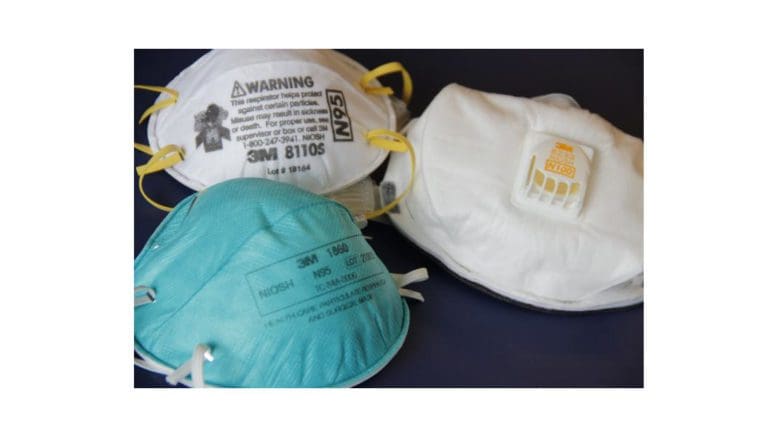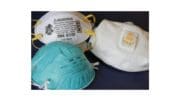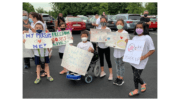This article by Amy Maxmen first appeared in KFF Health News, republished with permission.
Four years after hospitals in New York City overflowed with covid-19 patients, emergency physician Sonya Stokes remains shaken by how unprepared and misguided the American health system was.
Hospital leadership instructed health workers to forgo protective N95 masks in the early months of 2020, as covid cases mounted. “We were watching patients die,” Stokes said, “and being told we didn’t need a high level of protection from people who were not taking these risks.”
Droves of front-line workers fell sick as they tried to save lives without proper face masks and other protective measures. More than 3,600 died in the first year. “Nurses were going home to their elderly parents, transmitting covid to their families,” Stokes recalled. “It was awful.”
Across the country, hospital leadership cited advice from the Centers for Disease Control and Prevention on the limits of airborne transmission. The agency’s early statements backed employers’ insistence that N95 masks, or respirators, were needed only during certain medical procedures conducted at extremely close distances.
Such policies were at odds with doctors’ observations, and they conflicted with advice from scientists who study airborne viral transmission. Their research suggested that people could get covid after inhaling SARS-CoV-2 viruses suspended in teeny-tiny droplets in the air as infected patients breathed.
But this research was inconvenient at a time when N95s were in short supply and expensive.
Now, Stokes and many others worry that the CDC is repeating past mistakes as it develops a crucial set of guidelines that hospitals, nursing homes, prisons, and other facilities that provide health care will apply to control the spread of infectious diseases. The guidelines update those established nearly two decades ago. They will be used to establish protocols and procedures for years to come.
“This is the foundational document,” said Peg Seminario, an occupational health expert and a former director at the American Federation of Labor and Congress of Industrial Organizations, which represents some 12 million active and retired workers. “It becomes gospel for dealing with infectious pathogens.”
Late last year, the committee advising the CDC on the guidelines pushed forward its final draft for the agency’s consideration. Unions, aerosol scientists, and workplace safety experts warned it left room for employers to make unsafe decisions on protection against airborne infections.
“If we applied these draft guidelines at the start of this pandemic, there would have been even less protection than there is now — and it’s pretty bad now,” Seminario said.
In an unusual move in January, the CDC acknowledged the outcry and returned the controversial draft to its committee so that it could clarify points on airborne transmission. The director of the CDC’s National Institute for Occupational Safety and Health asked the group to “make sure that a draft set of recommendations cannot be misread to suggest equivalency between facemasks and NIOSH Approved respirators, which is not scientifically correct.”
The CDC also announced it would expand the range of experts informing their process. Critics had complained that most members of last year’s Healthcare Infection Control Practices Advisory Committee represent large hospital systems. And about a third of them had published editorials arguing against masks in various circumstances. For example, committee member Erica Shenoy, the infection control director at Massachusetts General Hospital, wrote in May 2020, “We know that wearing a mask outside health care facilities offers little, if any, protection from infection.”
Although critics are glad to see last year’s draft reconsidered, they remain concerned. “The CDC needs to make sure that this guidance doesn’t give employers leeway to prioritize profits over protection,” said Jane Thomason, the lead industrial hygienist at the union National Nurses United.
She’s part of a growing coalition of experts from unions, the American Public Health Association, and other organizations putting together an outside statement on elements that ought to be included in the CDC’s guidelines, such as the importance of air filtration and N95 masks.
But that input may not be taken into consideration.
The CDC has not publicly announced the names of experts it added this year. It also hasn’t said whether those experts will be able to vote on the committee’s next draft — or merely provide advice. The group has met this year, but members are barred from discussing the proceedings. The CDC did not respond to questions and interview requests from KFF Health News.
A key point of contention in the draft guidance is that it recommends different approaches for airborne viruses that “spread predominantly over short distances” versus those that “spread efficiently over long distances.” In 2020, this logic allowed employers to withhold protective gear from many workers.
For example, medical assistants at a large hospital system in California, Sutter Health, weren’t given N95 masks when they accompanied patients who appeared to have covid through clinics. After receiving a citation from California’s occupational safety and health agency, Sutter appealed by pointing to the CDC’s statements suggesting that the virus spreads mainly over short distances.
A distinction based on distance reflects a lack of scientific understanding, explained Don Milton, a University of Maryland researcher who specializes in the aerobiology of respiratory viruses. In general, people may be infected by viruses contained in someone’s saliva, snot, or sweat — within droplets too heavy to go far. But people can also inhale viruses riding on teeny-tiny, lighter droplets that travel farther through the air. What matters is which route most often infects people, the concentration of virus-laden droplets, and the consequences of getting exposed to them, Milton said. “By focusing on distance, the CDC will obscure what is known and make bad decisions.”
Front-line workers were acutely aware they were being exposed to high levels of the coronavirus in hospitals and nursing homes. Some have since filed lawsuits, alleging that employers caused illness, distress, and death by failing to provide personal protective equipment.
One class-action suit brought by staff was against Soldiers’ Home, a state-owned veterans’ center in Holyoke, Massachusetts, where at least 76 veterans died from covid and 83 employees were sickened by the coronavirus in early 2020.
“Even at the end of March, when the Home was averaging five deaths a day, the Soldiers’ Home Defendants were still discouraging employees from wearing PPE,” according to the complaint.
It details the experiences of staff members, including a nursing assistant who said six veterans died in her arms. “She remembers that during this time in late March, she always smelled like death. When she went home, she would vomit continuously.”
Researchers have repeatedly criticized the CDC for its reluctance to address airborne transmission during the pandemic. According to a new analysis, “The CDC has only used the words ‘COVID’ and ‘airborne’ together in one tweet, in October 2020, which mentioned the potential for airborne spread.’”
It’s unclear why infection control specialists on the CDC’s committee take a less cautious position on airborne transmission than other experts, industrial hygienist Deborah Gold said. “I think these may be honest beliefs,” she suggested, “reinforced by the fact that respirators triple in price whenever they’re needed.”
Critics fear that if the final guidelines don’t clearly state a need for N95 masks, hospitals won’t adequately stockpile them, paving the way for shortages in a future health emergency. And if the document isn’t revised to emphasize ventilation and air filtration, health facilities won’t invest in upgrades.
“If the CDC doesn’t prioritize the safety of health providers, health systems will err on the side of doing less, especially in an economic downturn,” Stokes said. “The people in charge of these decisions should be the ones forced to take those risks.”KFF Health News is a national newsroom that produces in-depth journalism about health issues and is one of the core operating programs at KFF—an independent source of health policy research, polling, and journalism. Learn more about KFF.
Subscribe to KFF Health News’ free Morning Briefing.





